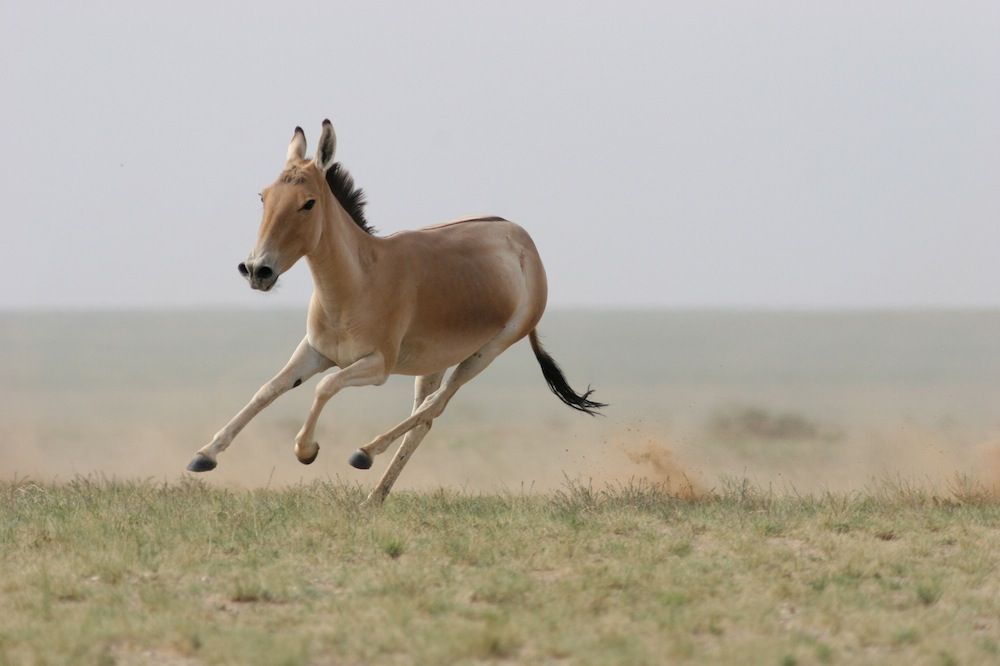
Fenced In, Animal Migrations Cannot Survive (Op-Ed)

Bradnee Chambers, Executive Secretary of the United Nations Environment Program Convention on the Conservation of Migratory Species of Wild Animals, contributed this article to LiveScience's Expert Voices: Op-Ed & Insights.
Animal migration is one of the world's greatest natural phenomena — yet, those arduous journeys are being made even more difficult by human activities. Intensively built infrastructure is badly affecting migratory species in the steppes of Central Asia, and in the rush for economic growth, wildlife is suffering. However, minor design changes could enable economic progress and environmental concerns to go hand-in-hand.
Second only to the Serengeti, the steppes of Kazakhstan are a migration hotspot where expansive ecosystems have remained largely intact into the present day. The country emerged from the dissolution of the Soviet Union in 1991, adopted economic reforms and has enjoyed an economic boom based on exports of minerals, oil and agricultural products — successfully weathering recent financial storms. But the vast, landlocked country wants to modernize further. A new highway will reduce by half journey times from Kazakhstan's largest city, Almaty, to the Chinese border, and high-speed rail links will mean that the northern- and southernmost cities will be just 18 hours apart.
Kazakhstan is also in the frontline of the war on drugs — it borders Afghanistan — and is in the process of securing stretches of its border with Uzbekistan by building an 8-foot-high (2.5-meter-high) wire fence.
One problem is that the border fences, roads and railways — with their associated embankments and cuttings — form impassable barriers to animals such as the saiga antelope, for which Kazakhstan is the main range state. Another problem is that better transport leads to more disturbance and encroachment of human settlements into previously unspoilt habitat.

Animal numbers are dwindling, habitats are becoming fragmented and poaching is taking its toll; an insensitively constructed road would be just another nail in the coffin. Only 20 years ago, a million saigas roamed the steppes, before undergoing a spectacular collapse of more than 90 percent in the 1990s, leaving only about 50,000 animals. Poaching for their meat and the males' horns — used in traditional medicines — was the main driver. Numbers are now back up to 160,000 in five separate and mainly stable populations, but one group has recently suffered two major "mortality incidents;" thousands of animals, predominantly females and calves, died.
There are international efforts under way to ensure that the saiga survives – it is protected under the Convention on International Trade in Endangered Species of Wild Fauna and Flora (CITES), the convention that regulates international trade in wildlife, and the Convention on Migratory Species (CMS), under which those countries where the saiga roams have concluded a specific international agreement.
Sign up for the Live Science daily newsletter now
Get the world’s most fascinating discoveries delivered straight to your inbox.
There is a similar story in Mongolia, which is also keen to develop its infrastructure by building railways to serve the country's mines and improve transport connections with China and Russia. Here, it is Mongolian gazelles and khulans (wild asses) that are confronted with fences that they cannot pass; many die in the attempt. The animals also do not know how to negotiate railways, so tired and malnourished — and unable to reach the best feeding grounds or avoid harsh weather conditions — the animals become vulnerable to predators and disease, and their reproduction rates fall.
All these issues have been raised in international fora such as the recent international conference convened by CMS, the German and Mongolian Ministries of the Environment and the German Nature Conservation Agency, and participants have devised and published mitigation measures. The solution could be minor changes to the construction of border fences — the main purpose of which is to keep vehicles out rather than animals in — by raising the height of the lowest fence wire. Similarly, removing superfluous fencing and incorporating crossing points along railways, with cattle guards to stop animals erring onto the tracks, would allow animals to migrate unimpeded.
We know why animals migrate — to look for the best conditions to breed and feed. We are only just beginning to understand how some of them do it and can only marvel at how salmon and turtles find the river or beach where they hatched after years at sea. The distances covered by some species run into thousands of kilometres. Only the fittest overcome natural barriers such as mountains, oceans and deserts, but few animals can adapt fast enough to surmount modern hazards placed in their way by humans.
To prove the pessimists wrong, governments need only adopt a win-win strategy of encouraging development and meeting international environmental obligations, by making the minimal adjustments required to ensure that 21st-century transport, especially when associated with extractive industries, does not put an end to animal migrations that have been taking place for millennia.
The author's most recent Op-Ed was "Snow Leopard's Fate Hinges on Historic Talks."
The views expressed are those of the author and do not necessarily reflect the views of the publisher. This version of the article was originally published on LiveScience.
Most Popular

